“If Blumhouse is in a slump, I’d like to tell that story. I don’t want other people to tell that story.”
In a baffling moment of industry transparency, Jason Blum called into The Town podcast on the morning after M3GAN 2.0’s disastrous opening weekend in late June to discuss what went wrong. Jason is the founder and leader of the highly successful Blumhouse Productions, a movie studio that quickly rose to success in the 2010s by producing low-budget horror films. Jason is notorious for being open about the normally clandestine aspects of the moviemaking business, but The Town episode was extraordinarily illuminating and revealing. At the same time, Jason Blum was there to spin like any typical Hollywood mogul.
M3GAN 2.0 opened to only 10 million dollars on its premiere weekend in late June 2025, which was under a third of what the original film opened to in 2023. The sequel will end up with a total of 39 million dollars at the box office versus the 181 million dollars of the original. Adding insult to injury, the production budget on the sequel was 25 million vs the original’s 15 million, and the marketing budget for part two was certainly much higher as well. In short, M3GAN 2.0 is a huge bomb.
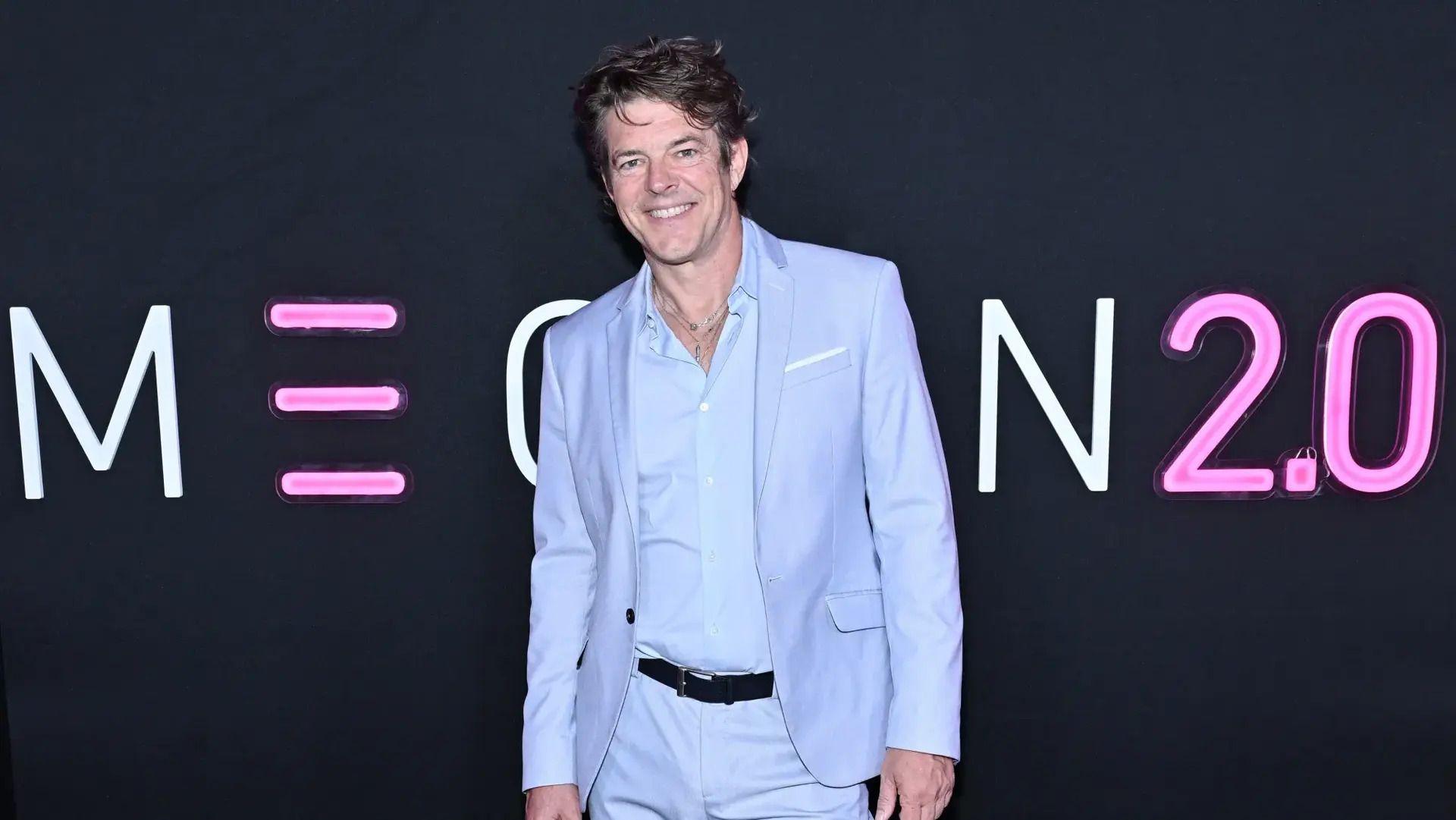
Jason Blum at M3GAN 2.0 Premiere - AMC Lincoln Square 13 on June 24, 2025
Blumhouse Cold Snap
Every movie studio has bombs. M3GAN 2.0 is a bad one, but it won’t put Blumhouse out of business. Jason went on The Town to put out any fires the film's failure might have started. He was also trying to head off the exact article that I am writing here. M3GAN 2.0 is the latest in a long line of bombs for Blumhouse Productions. The ace horror studio has gotten the yips. It all started in January 2024 with the release of their haunted pool movie, Night Swim. That concept was so stupid, I honestly thought it was a joke when the trailer dropped. Laugh all you want, but Night Swim made 3.6x its production budget at the box office. Not bad, it was probably break-even for Blum. But the film’s poor quality and muted financial performance kicked off a cold snap for Blumhouse that continues today.
From Night Swim to M3GAN 2.0, Blumhouse released eight films. All of them were scrubs except Speak No Evil. It is the coldest streak the company has ever had. The first Blumhouse movie after Night Swim was so bad that Universal, which has an exclusive first-look deal with Blumhouse, decided to pass on it. Imaginary sputtered to 43 million when Lionsgate put it out in March 2024. Blumhouse’s August 2024 release, Afraid, fared much worse, only taking in 13 million in global box office despite major studio distribution from Sony. This year, Blumhouse has put out four films, and none of them were able to get above a 2x domestic multiplier, considered the kiss of death for a film’s financial performance (Wolf Man, The Woman in the Yard, Drop, and M3GAN 2.0)
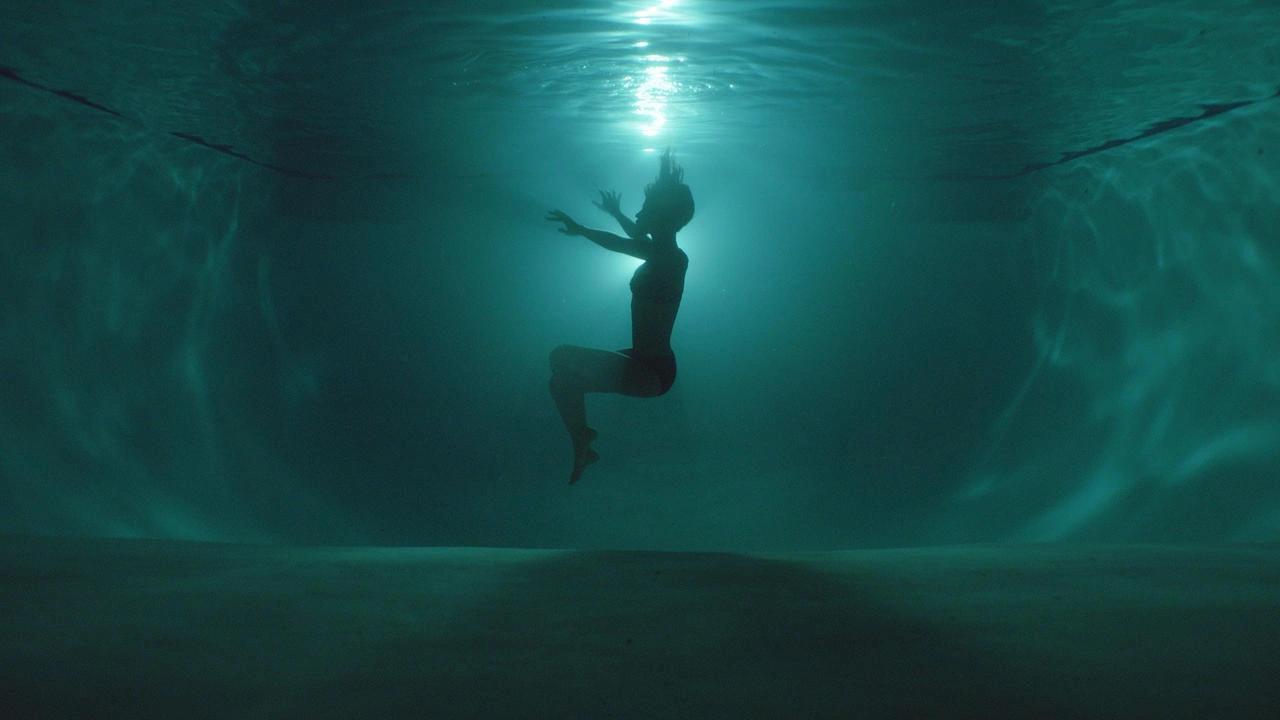
Night Swim (2024)
Critically, Blumhouse is batting .222 with Rotten Tomatoes since the start of the cold snap in 2024. Blumhouse has never been a critical darling like A24 or Neon, but their recent crop has been unusually barren. They aren’t even bad in a fun way. Wolf Man should have been a blast with Leigh Whannell at the helm, but it was tiresome, one of the most boring films I have ever had the displeasure of forcing myself to finish. Night Swim, Afraid, and Imaginary were all of similarly poor quality. I had to turn off Drop, a wasteful gimmick of a film. Ironically, M3GAN 2.0 is the highlight of the bunch by blending up genres into a blissful paella with queer panache. Speak No Evil was also a ton of schlocky fun in the old school way that Blumhouse films used to have.
Jason Blum admits himself that Blumhouse is in a creative and financial slump. It is also not his first slump. They had some stinkers in the 2015-16 crop like their double bomb of Paranormal Activity: The Ghost Dimension and Jem and the Holograms released on the same day in October 2015. Blum then released the unwatchable Kevin Bacon-led The Darkness in May 2016. But pound for pound, Blumhouse has been one of the most successful film companies of the last 20 years. Jason and his team are uniquely talented in transforming small budget horror films into huge box office hits. Their profit margin has been totally unmatched in the business, a true wonder, which is why this recent slump feels so pointed. This is their longest and deepest dry spell.
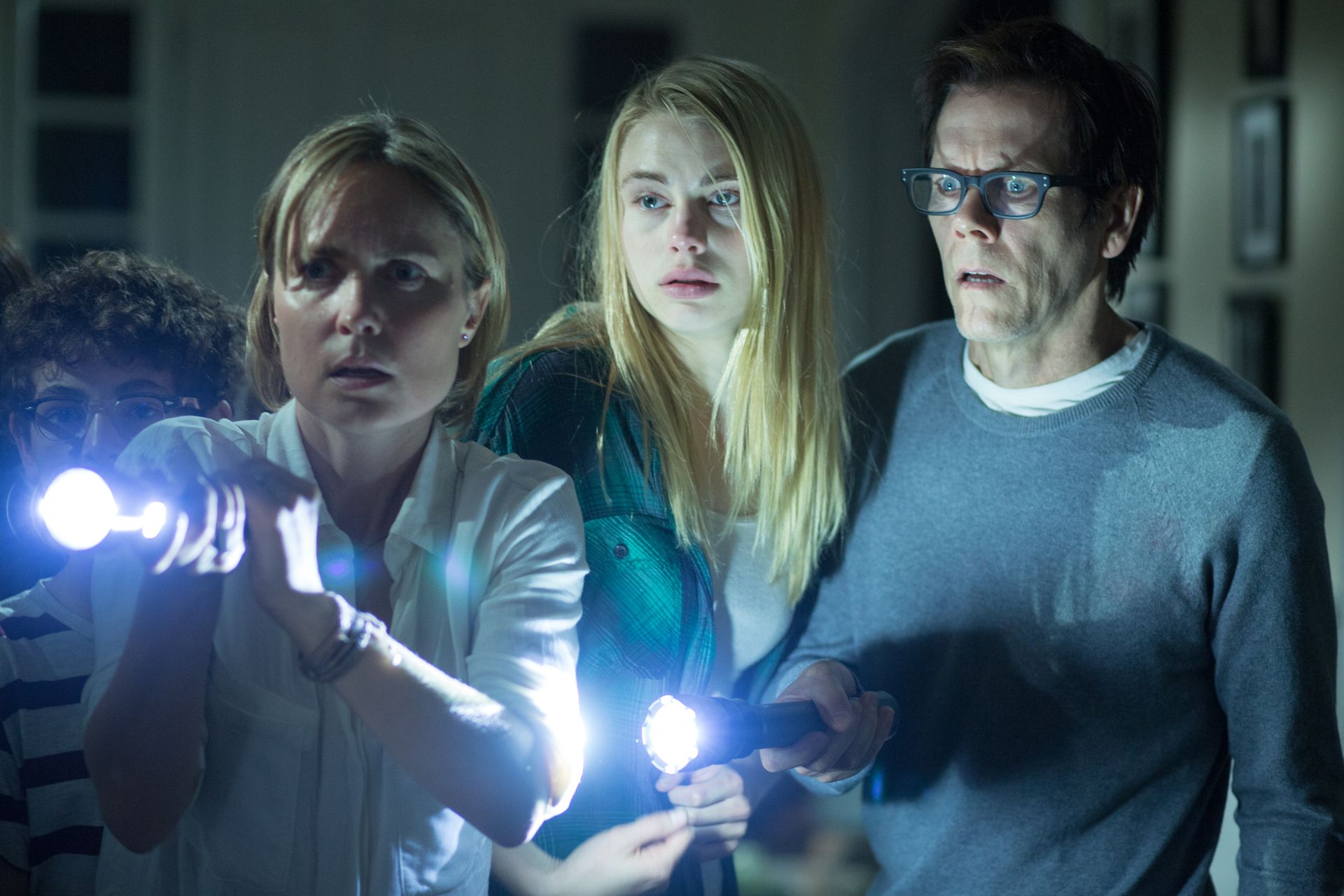
The Darkness (2016)
Origin Era
If you had the displeasure of seeing Blumhouse’s Afraid last year, it is hard to imagine the halcyon days of Blumhouse’s origin era when they were hitting creative and financial grand slams with nearly every release. The found footage gimmick film Paranormal Activity started it all in 2009 making 194 million dollars at the box office on a production budget of only 450k. In other words, the film made 431x its production budget at the box office. Yes, 431 times its budget, which makes it one of the most profitable films of all time. Not bad for a first release. The micro-budget success of Paranormal Activity became the model that built the machine that is Blumhouse Productions. Jason Blum has openly explained their model many times: low budgets with no wiggle room and total creative freedom for directors, a paradoxical mixture of extreme limits with no censorship. Additionally, and this is perhaps where they have gone wayward recently, Blumhouse looks for weird, odd, and truly unique stories. That simple philosophy totally changed the horror genre.
In 2010, the Paranormal Activity sequel did 59x its production budget at the box office. Following a year later, Blum launched the Insidious franchise helmed by the brilliant James Wan, which did 66x its production budget in box office receipts. The same year, PA3 did 41x its production budget in ticket sales. In 2012, Blumhouse put out Sinister and PA4, which both did about 29x their production budgets in box office sales. To put this in perspective, a hit at the movie theater is a film that does around 3-4x its budget in sales. Blumhouse was literally hitting nothing but game-winning grand slams with every single release. The first six horror films they released made 50x their production budgets. They spent 18 million dollars on productions to get a return of 910 million dollars. Pure insanity.
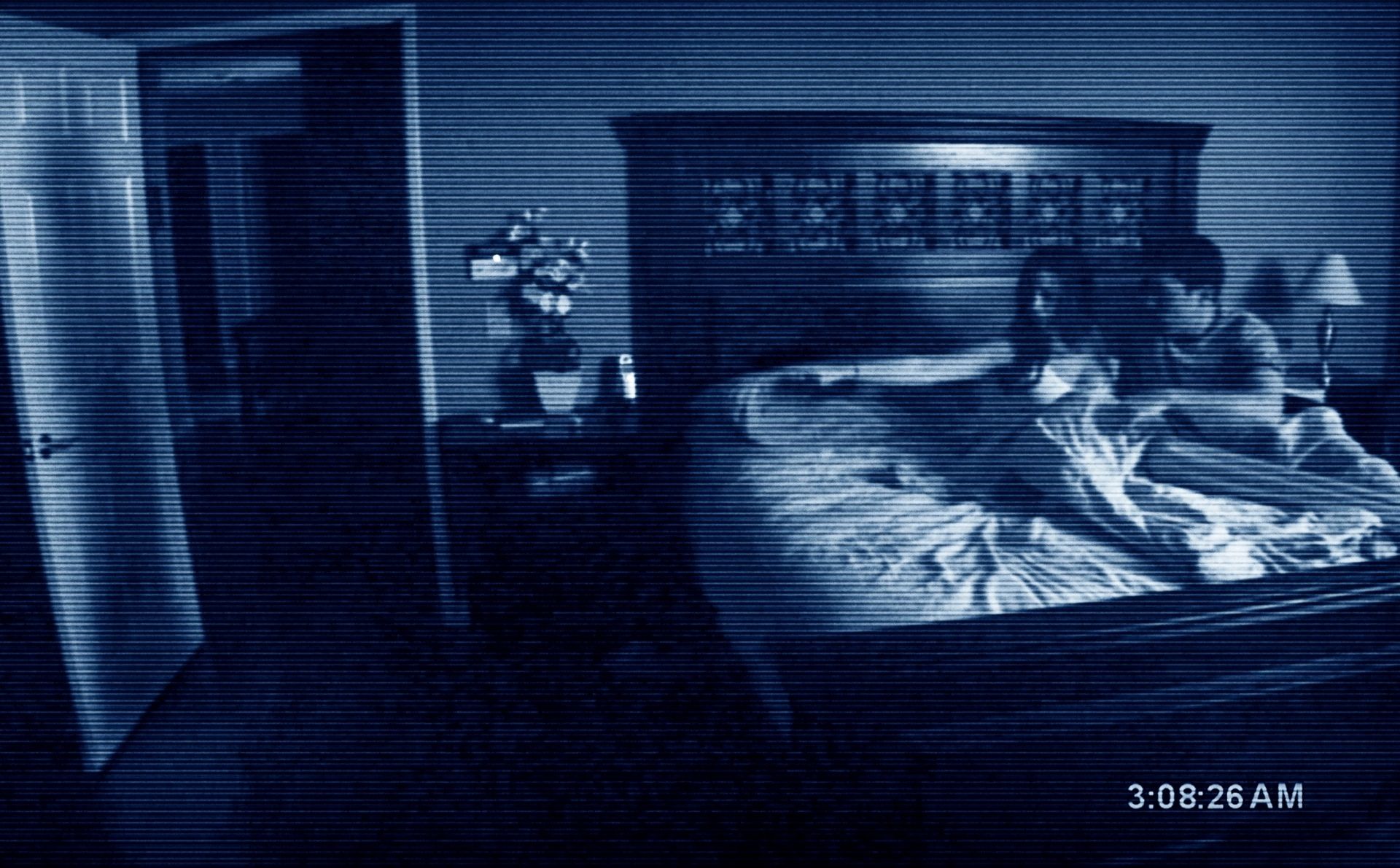
Paranormal Activity (2009)
The amazing early success of Blumhouse changed not only the horror genre but the entire film industry. Jason Blum had embarrassed the major studios. He demonstrated how you could produce a film for 1/10th the normal cost and still get millions of people to show up. Blum was the margin man. He made it possible for a 1 million dollar movie to generate $100 million at the box office. This was revolutionary for the business of filmmaking. Perhaps even more phenomenal was Blum’s ability to replicate this model over and over again with each new release.
Along with the bevy of home run sequels to the Paranormal Activity, Insidious, and Purge films, Blumhouse put out award winning films like Whiplash in 2014 and Get Out in 2017. They helped revitalize M Night Shyamalan’s career with The Visit in 2015 and then the huge hit of Split in 2017. Blum relaunched the prestigious Halloween series with the highly successful 2018 reboot by David Gordon Green. I could easily write a whole essay about the importance and success of Blumhouse. This is why there has been an air of supremacy surrounding Jason and his company since the first test screenings of Paranormal Activity. He has proven himself to be a highly influential creative leader with the Midas touch. But when I started parsing the numbers for this essay, I noticed a very interesting pattern in the business of Blumhouse—a pattern that calls into question the aura of invincibility that has surrounded Blumhouse Productions since its inception.
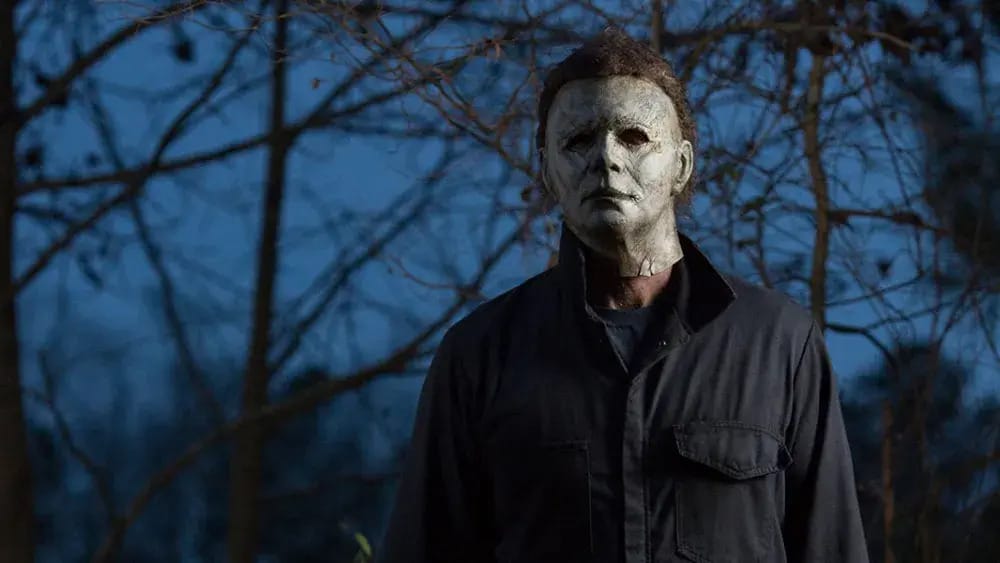
The huge reboot hit - Halloween (2018)
The Descent
Blumhouse has to be one of the most profitable film companies of all time. My numbers show a return at the box office of over 6.2 billion dollars on a 700 million dollar investment. These numbers are obviously simplified and not actual profit, but they also don’t lie. At the same time, the stratospheric profit margins of their early films have never been replicated by Blumhouse. As I previously noted, the first six films made 50x box office vs their production budgets. That was the high point in profit margin for the company. Since then, the margin has slowly but surely been descending. It's almost as if the company rocketed to a cruising altitude and then immediately started a very slow descent down to earth. By the time you get to the pandemic, the Blumhouse ROI had dropped down to about 10x— still amazing, but a different world then the 50x when they began.
The more I thought about this and looked at the numbers, a very clear pattern began to emerge. While Blumhouse has been greenlighting bigger and bigger projects and continuing to release successful films over the last decade, their profit margin has always been contracting. Box office receipts and production budgets are not the only inputs into the profit and loss ledger of a film, but they absolutely are the leading indicators. Blumhouse has been making less and less profit the bigger and bigger they get. The recent Blum slump is part of a much broader pattern that has been happening since the company started.
When I smooth out the Blumhouse data for production budgets and box office receipts, the Blumhouse Supremacy quickly fades away. A very pristine pattern emerges of a company and brand that started out with immense success but has slowly become less and less successful. The most fascinating aspect of this descent pattern is how gradual and slow it has been, but never faltering in its downward direction. Again, to contextualize, Blumhouse is making money on most of their movies. Even now, with their slump, they are not losing tens of millions. But the margin contraction has been severe from the company’s origin to now. Where the company started out making 50x its production budget at the box office, it now makes only about 7x in box office sales vs production budgets.
Boo-hoo. They are still making 7 times what they spend to make a movie. Well, it's not at all that simple, but the point is very fair. Blumhouse is still successful, especially when compared to the average major film studio who would die to have their movies average even a 3x return at the box office. At the same time, the pattern is very clear and demonstrates a consistent margin pressure on Blumhouse that accelerated with the pandemic. Blumhouse has not really recovered from the global shutdown despite having stellar recent hits like The Black Phone, M3GAN, Insidious: The Red Door, and the huge Five Nights at Freddy’s. Those successes did not stop the downward trajectory of the company’s profit margin, which is quite startling. Maybe Jason Blum should be worried.
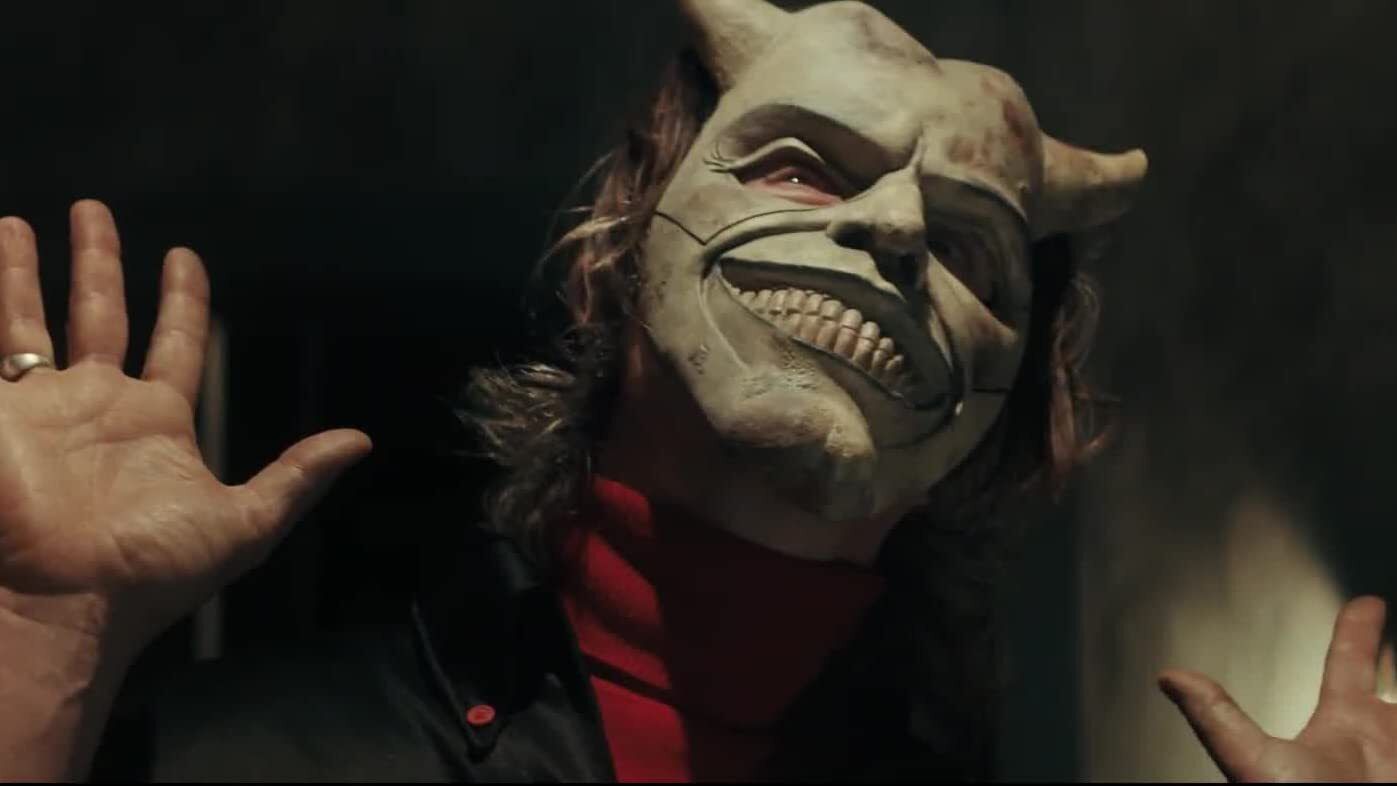
The Black Phone (2021)
I feel like I am splitting hairs a bit, but I cannot shake the feeling that this data means something vital for Blumhouse. The data clearly refutes the narrative that Blumhouse had some secret model that printed money. I had just assumed the Jason Blum model was invincible as I stated in my State of HorrorWhen Jason Blum called into The Town to discuss the very fresh failure of M3GAN 2.0, he openly admitted the problem Blumhouse is facing: the movie theater business is still in chaos stemming from the pandemic shut downs. For instance, predicting box office performance, aka tracking, has become wildly unpredictable. Blum states that M3GAN 2.0 was tracking to a $40m opening weekend eight weeks before release. At six weeks prior, $30m. Five days before opening, it dropped to $20m. The film opened to 10 million dollars.
Additionally, the movie marketplace has become feast or famine. People show up big or not at all. Sinners and Final Destination vastly outperformed expectations earlier this year, but audiences ignored other horror films like Bring Her Back, Wolf Man, The Woman in the Yard, and Until Dawn. On top of this, the market has contracted severely. Blumhouse finds itself slower and weaker in a more highly competitive environment. The big question facing Jason and his team is what now? The slump is real, and I would argue it has been happening for much longer than Blum would like to admit. I think Blumhouse has few different paths to take:
First, Blumhouse could sell. Maybe it's time for Jason and his team to hang up their spurs. He admits in The Town interview that “what is working now is very different than what used to work for Blumhouse.” Blumhouse took off before streaming movies became popular, and they excelled in the pre-Covid market when the rules were very different. Streaming and Covid have decimated the movie theater business, which essentially has been cut in half since those more innocent days before N95s. Blumhouse has struggled to regain its footing post pandemic, but their brand is still very strong, especially amongst horror fans. It makes a lot of sense for Blumhouse to sell to their long term distribution partners at Universal. They could be Universal’s Screen Gems. Or maybe a deal with Apple or Disney makes more sense to create a true Shudder competitor on streaming?
The other option would be for Blumhouse to attempt to rekindle the glory of its origin days when they could make a movie for $2 million and turn out a $200 million box office hit like Paranormal Activity, Insidious, Sinister, and The Purge. These were all small bets that paid off huge. But recapturing the early magic would be hard, if not impossible, as Blum admitted on the podcast:
“You can’t break out. If you look at last year, one movie did over 100 million that was a low budget horror movie, Long Legs, that’s it. I think it is virtually impossible to make Get Out, to make a movie for 4.5 million, and have it do 250 million.”
In addition to this new financial reality, Blumhouse has ceded a lot of creative ground in the horror space to A24 and Neon. Those indie upstarts have pretty much taken over the more out-there, experimental communities of horror filmmaking. The early Blumhouse movies felt transgressive, which is why they popped off. Their recent slate has felt like afternoon tea compared to Sinister or Insidious. A24 and Neon have swooped in. Look at A24’s Bring Her Back this year. Or Neon’s 2025 horror slate of Together, Shelby Oaks, Keeper. Watching Bring Her Back and then sitting through Night Swim would be a harrowing experience followed by a nice nap. To put it bluntly, from a passionate horror nerd, Blumhouse can no longer compete in the experimental art horror genre.
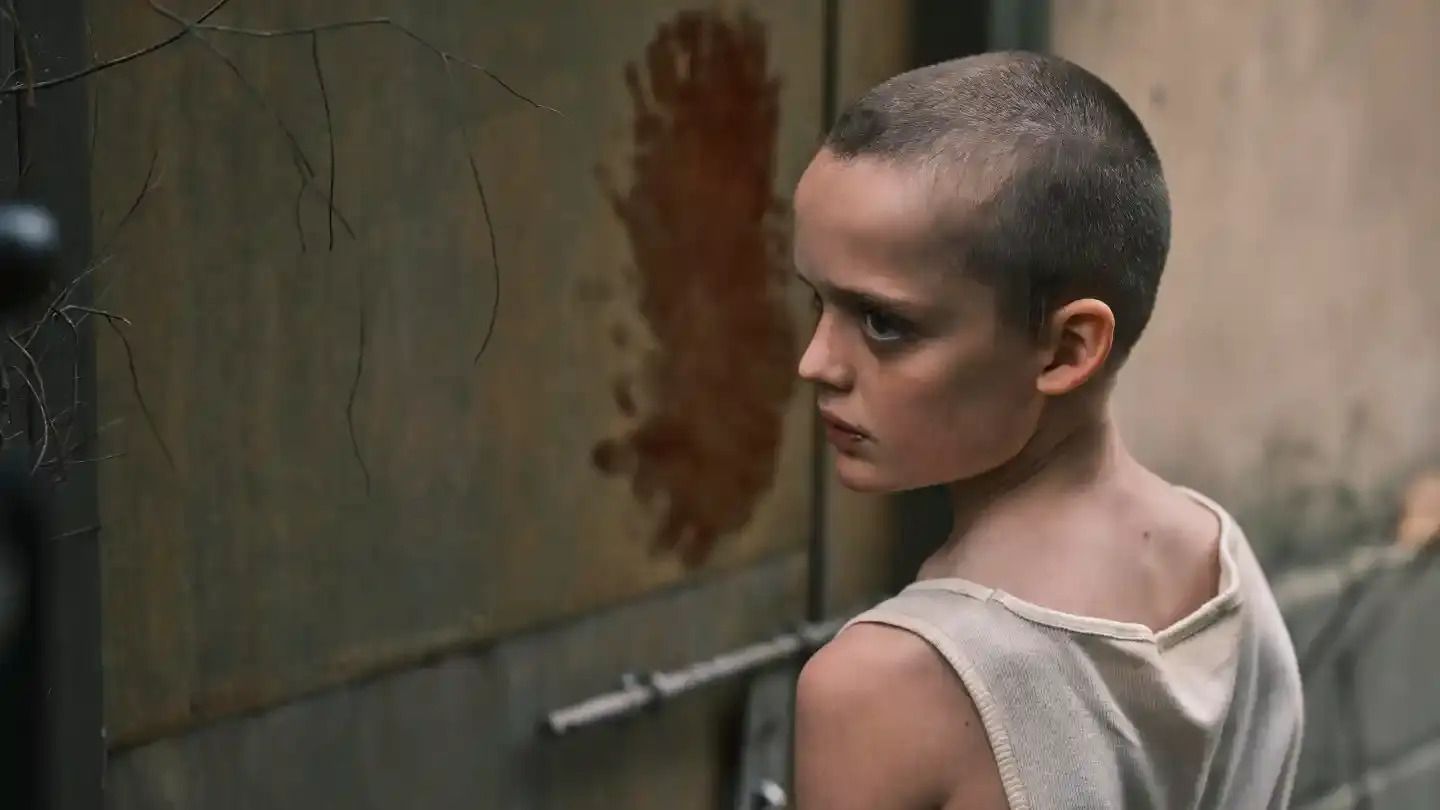
A24’s art house horror, Bring Her Back (2025)
The path I would like Blumhouse to take is to become a mid major studio a la Lionsgate. I don’t think it is time to sell. At the same time, “you can’t go back, Bob.” Jason Blum is a savvy businessman and great creative leader. I think he can steer the company to level up. That means bigger investments, bigger risk, and new ways of making movies. In some ways, Jason has been doing this with the Halloween trilogy and the Exorcist deal. But I would argue he has not really landed the plane yet. The Halloween series started out strong but quickly faded with Kills and nose dived with Ends. Exorcist: Believer just didn’t hit at all with horror fans and was ignored by general audiences.
The Blumhouse model from pre-Covid days just doesn’t work at a mid major studio. Small bets on super high risk projects will not sustain the business anymore. They need to be shooting for $30-60 million budgets with large marketing campaigns. Spectacle wins at the box office. This means Blumhouse has to take bigger risks on more established stories and characters like Halloween and Exorcist. Blum took a big step in the right direction by firing David Gordon Green and bringing in emo Horror maestro Mike Flanagan for the Exorcist: Believer sequel. I would also like to see the Nightmare on Elm Street and Friday the 13th series live on at Blumhouse. That is the exact type of film they need to be making: big horror movies based on established characters. If Blumhouse can successfully traverse these heady days towards mid-major status, they can eventually go back to the micro-budget well and splash around. That would create a great high-low strategy—something that Lionsgate currently does well.
In many ways the die has been cast for Blumhouse. Their continued success has forced them out of the minor leagues where they flourished into a new market where they are floundering. They find themselves reaching up in the dark trying to grab the next rung on the ladder. The current Blumhouse cold streak is not an aberration. It is the continuation of a pattern that has been playing out since the early days of the company. Nothing gold can stay, and Blumhouse’s early hyper-success was impossible to maintain. Surprisingly, and the key to the company's exceptional performance, has been their ability to slow down the inevitable reduction in profit margin as they have grown rapidly. They now face the rote problems of any major movie studio. Before, they asked themselves how much profit can we squeeze out of micro-budget horror films. Now they ask themselves, can we even make money on this new 40 million dollar Exorcist sequel. A different world and a different business.
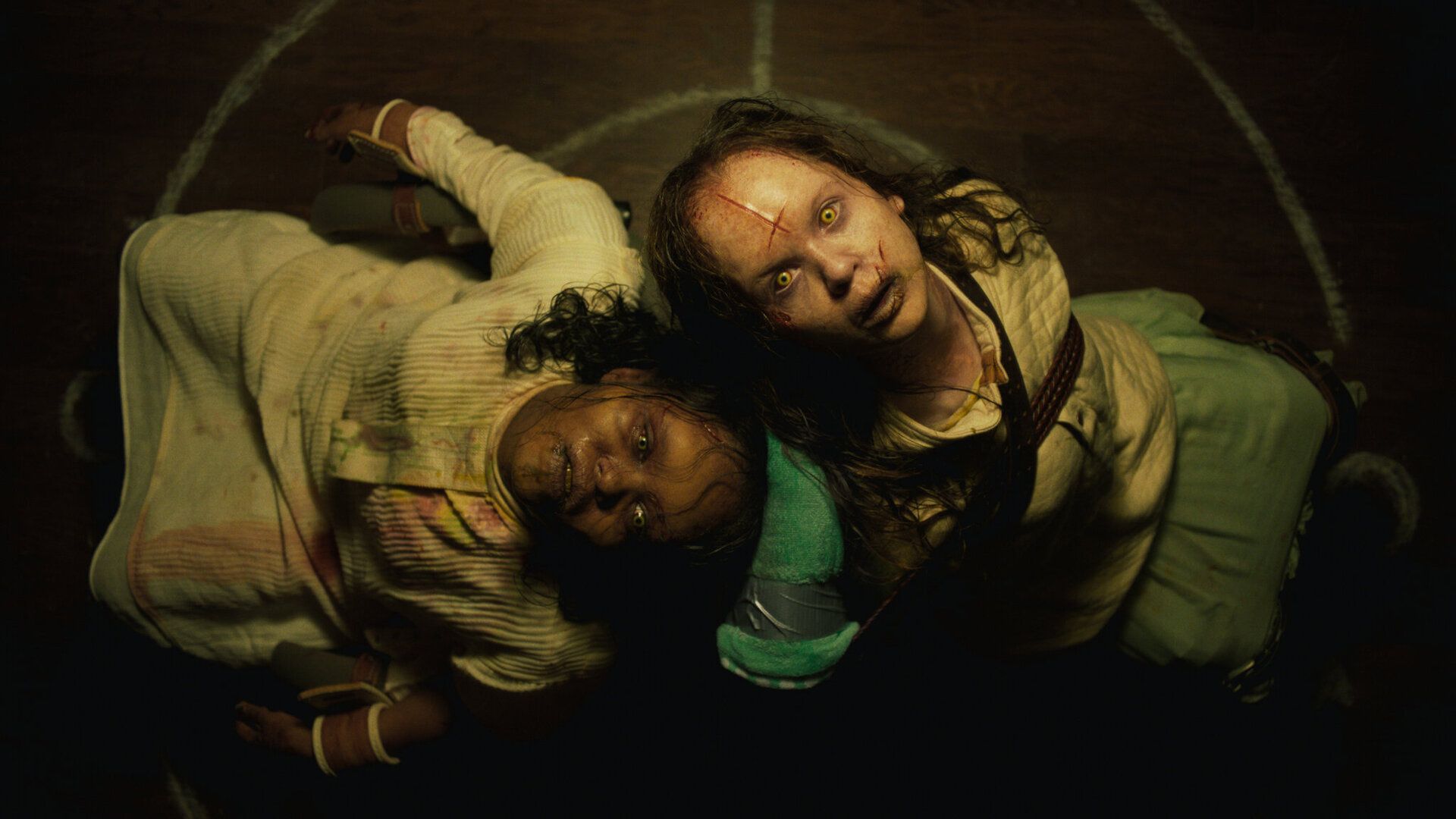
Expensive Reboot Failure - The Exorcist: Believer (2023)
Jason Blum and Blumhouse Productions are on the Mount Rushmore of horror. I am not writing this to disparage or besmirch the company’s lofty status or impeccable reputation within horror filmmaking—quite the contrary. I love the company and many of the films they have created. This is why I am being harsh. The “Blumhouse Supremacy” was an illusion. Jason didn’t have some secret formula he used to create box office hits out of miniscule budgets. What Blum understood more than anyone else in the business is that horror films need to do one thing: scare people. You don’t need 100 million dollars to do that.
Jason Blum correctly diagnoses the major problem right now at the box office during his Town interview. Spectacle wins, everything else loses. Where I think Jason is wrong, and perhaps in denial, is his rewriting of Blumhouse’s early success. Paranormal Activity was a spectacle. Get Out was a spectacle. A spectacle is a social phenomenon, not necessarily a financial one. You don’t need to spend $50 million on marketing to create spectacle, especially with horror films. You need a hook, and you need to spark a reaction in people. You have to scare the fuck out of them. That doesn’t require a lot of money, it requires creative boldness and the courage to be transgressive. This is what Jason Blum and his team have lost. You can’t win in horror if you are pulling your punches.

The cast from Get Out with Jason Blum - Spirit Awards 2018
